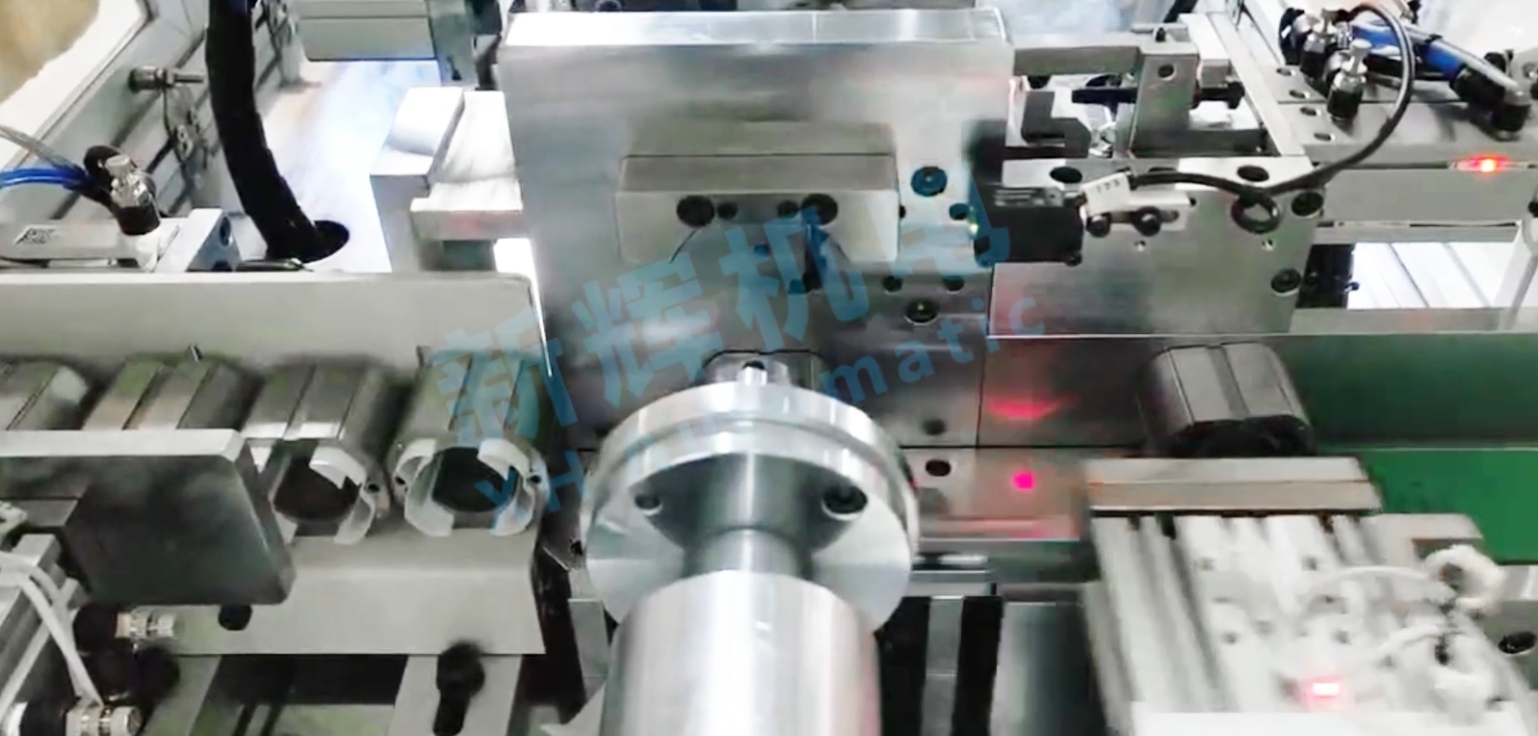What are the spare parts required for automatic slotting machines and how to set up a guaranteed stock?
I. Spare parts
(I) Mechanical parts
Transmission parts
Belt and chain: This is the key part of the transmission system of the equipment. Since long-term use will lead to wear, elongation or breakage, it needs to be stocked. For example, depending on the type of equipment and frequency of use, it is estimated that belts may need to be replaced every 3 - 6 months and chains every 6 - 12 months.
Gears: Gears may experience tooth wear and chipping under high load operation. For frequently used equipment, it is recommended to stock different sizes of gears, especially those critical gears that are responsible for major power transmission.
Couplings: Couplings are used to connect rotating parts of different shafts and are prone to loosening, wear or damage. Couplings may need to be replaced when the equipment experiences abnormal vibration or when the connection between shafts is not tight.
Positioning and clamping devices
Locating pins and blocks: they ensure precise positioning of the stator and slot paper during insertion. Due to frequent impact and friction, they are susceptible to wear, which affects the positioning accuracy. A sufficient number of positioning pins and blocks should be stocked to ensure the accuracy of the positioning of the equipment.
Clamps and jaws: Used to hold the stator in place, their clamping surfaces may wear out, resulting in insufficient clamping force. Regularly check the wear and tear of clamps and jaws, and stock up on suitable spares so that they can be replaced in time when needed.
Slot paper insertion tools
Pins and pusher plates: These tools are directly involved in the slot paper insertion operation and are susceptible to damage caused by the material of the slot paper, stator structure and other factors. For example, when the slotted paper is too hard or there is a foreign object in the stator groove, the pins may be bent or broken, so it is necessary to reserve a certain number of pins and push plates.

(ii) Electrical parts
Sensors
Photoelectric sensors, proximity sensors and Hall sensors: these sensors play a vital role in the operation of the equipment, and are used to detect the slot paper position, stator position and motor speed. Due to the influence of the working environment (e.g. dust, oil, electromagnetic interference, etc.), the sensors may fail. According to the frequency of past failures, a certain number of various types of sensors are stocked to ensure that the equipment can return to normal operation in time.
Motors and drives
Series excitation motor motor: the motor is the core power source of the equipment, long-term operation may appear winding short-circuit, broken circuit, brush wear and other problems. When stocking motors, pay attention to choosing products with the same model and specifications as the original motor of the equipment.
Motor driver: The driver is used to control the speed and torque of the motor, and the internal electronic components may be damaged due to overload, overheating and other reasons. For the spare parts of the driver, make sure that its parameters match the control requirements of the motor and the equipment.
Components in the electrical control cabinet
Relays and contactors: These components operate frequently in the circuit and are prone to problems such as contact sticking and ablation. Stock an appropriate number of relays and contactors, and note that their rated current, voltage and other parameters match the requirements of the equipment circuit.
Fuses and circuit breakers: They are circuit protection devices that will fuse or trip when there is an overload or short circuit in the circuit. Stock up on fuses and circuit breakers so that they can be quickly replaced after a fault occurs to restore the circuit to normal operation.
(iii) Other components
Bearings: There are many rotating parts in the equipment that need to be supported by bearings. The bearings may wear out and be damaged after long-term use, resulting in increased vibration and noise of the equipment. Reserve bearings of different specifications for replacing damaged bearings to ensure that the rotating parts of the equipment can operate smoothly.
Seals: such as oil seals and gaskets are used to prevent lubricant leakage and the entry of dust and foreign matter into the interior of the equipment. When the seals are aging or damaged, it will affect the normal operation of the equipment, so you need to stock some common seals.
Second, the protection of inventory settings
(i) Determine the key spare parts
Failure frequency analysis: analyze the failure frequency of each spare part by collecting the historical failure data of the equipment. For example, count the number of belt replacements and sensor failures in the past year, and identify the spare parts with high failure frequency as critical spare parts.
Maintenance time assessment: Consider the impact of spare part damage on equipment maintenance time. If the damage of a spare part will lead to a long downtime of the equipment waiting for spare parts replacement, then even if its failure frequency is not high, it should be classified as a critical spare part. For example, some special specifications of the motor drive, if you need to customize from the manufacturer, the procurement cycle is longer, you need to focus on its guaranteed inventory.
(ii) Calculate the quantity of safeguarded stock
Mean Time to Repair (MTTR) and Mean Time Between Failure (MTBF) calculations:
Calculate the MTTR and MTBF of each spare part based on historical data MTTR is the average time required from the occurrence of an equipment failure to the resumption of normal operation, and MTBF is the average time interval between two adjacent failures. For example, a sensor has an MTBF of 1000 hours and an MTTR of 2 hours.
Use the formula: Guaranteed Inventory Quantity = (MTTR / MTBF) x Estimated Usage Quantity. Assuming that the equipment is expected to use 10 of these sensors in the next year (assuming 2000 hours of operation), then the guaranteed stock level = (2 / 1000) x 10 = 0.02 (rounded up to the nearest 1).
Consider the uncertainty factors: in the actual calculation, to consider some uncertainty factors, such as changes in the environment of the use of equipment, fluctuations in the quality of spare parts, changes in the delivery date of the supplier. Can be appropriate to increase the number of guaranteed stock, generally can be increased by 10% -30% of the margin. For example, the number of guaranteed stock of the above sensors can be considered to increase to 1 - 2.
(iii) Inventory management
Inventory monitoring and early warning: establish an inventory monitoring system to track the inventory quantity of spare parts in real time. When the stock quantity is lower than the lower limit of guaranteed stock (e.g. 50% of the guaranteed stock quantity), the system automatically issues an early warning to remind the purchasing department to replenish the stock in time.
Regular Inventory and Update: Regular inventory of spare parts inventory is conducted to ensure the accuracy of the inventory quantity. At the same time, according to the replacement of equipment, spare parts quality feedback, failure frequency changes, etc., timely update the type and quantity of guaranteed inventory. For example, if the equipment is technologically upgraded and certain spare parts are no longer used, or new spare parts are added to the equipment maintenance system, the inventory should be adjusted accordingly.
Supplier management: Establish long-term relationships with reliable spare parts suppliers to ensure the quality and timeliness of spare parts supply. Understand the supplier's lead time, minimum order quantity, price fluctuations, etc., in order to make reasonable decisions when setting up guaranteed inventory and purchasing spare parts. For example, choose suppliers that offer short lead times and stable prices, and for some critical spare parts, sign an emergency supply agreement with the supplier to ensure quick access to spare parts in the event of sudden equipment failure.
※ If you need any help, please contact Xinhui's technical specialists through the page chat tool for assistance.







